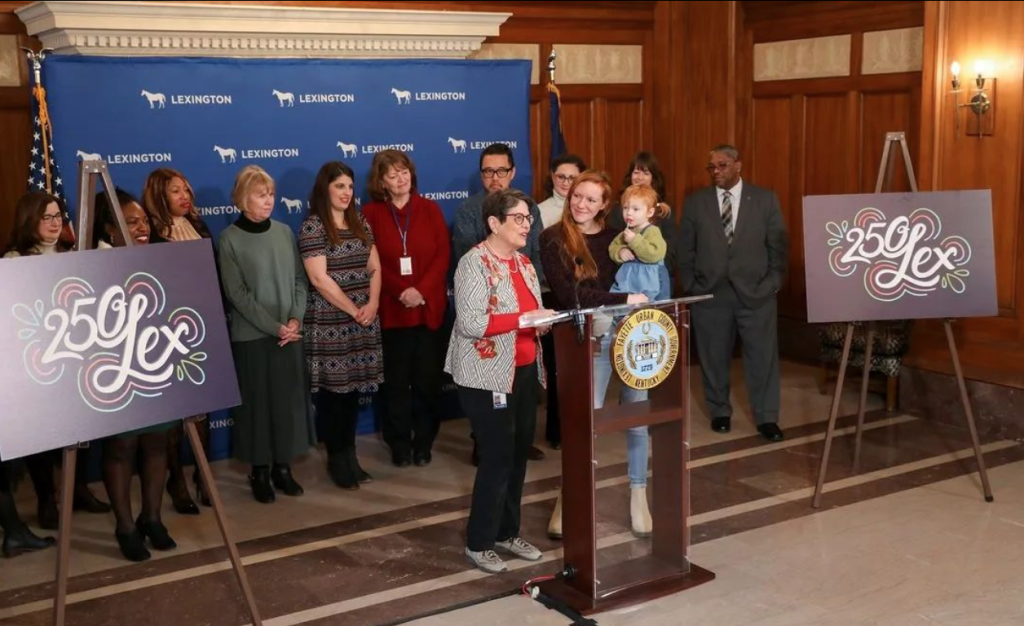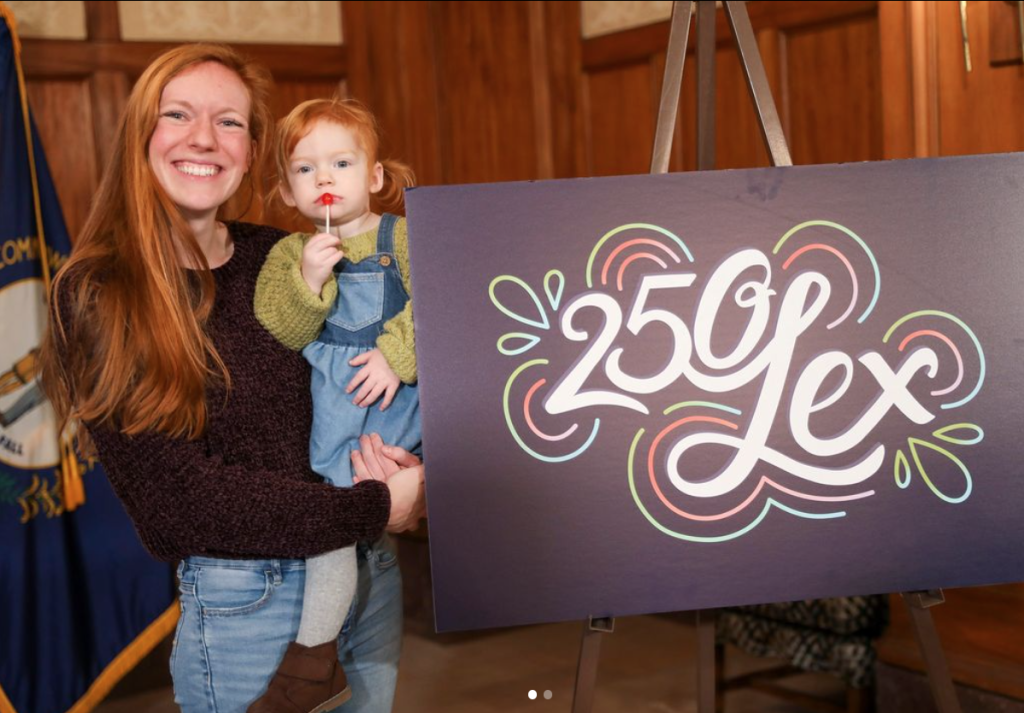In the fall of last year, I was presented with an opportunity to submit a logo into a contest for the city of Lexington’s 250th birthday. The winning logo will be used all over town in the year 2025 and be the face of the celebration. Sounds like an incredible project, right?
Well, as someone who designs for a profession, contests are something I normally avoid. It feels like a sneaky way for people to take advantage of designers (getting them to submit work for free and then not giving credit where it is due after the winner is chosen.) Thankfully, in this instance, I found that not only were they paying well, but they were publicly celebrating the artists of the city and allowing the winning designer to continue to work with them on the project. So, for those reasons (mixed with quite a bit of excitement), I spent an entire weekend perfecting my idea and creating my submission.
I was overjoyed when I got a phone call from the Mayor saying it was an almost unanimous decision to choose my logo as the face of Lexington in the year 2025. Reflecting back on the process, I thought this would be a great case study to give you some insight into all the thought that goes into a logo and a brand.

Here are my 7 steps to creating an award-winning logo:
1. Understand the assignment
You could create the most beautiful logo the world has ever seen, but if it does not fulfill the purposes and needs of the client, it would be useless. The prompt I received for the Lexington logo emphasized that this was a birthday celebration named “250Lex” and that it would focus on the historical and cultural milestones of the city with a year’s worth of community events. From this prompt alone, I knew what the text needed to say and that I would lean heavily into the feeling of celebration.

2. Keep it simple
For this project in particular, it would have been super easy to overcomplicate the logo. Lexington has a rich history, a lively culture, a strong equine presence, and an iconic skyline – a logo could have highlighted any one of these. But by keeping the design simple, it allows the logo to represent ALL of these things. The more complex you make it, the less information it can represent.
3. Make it compatible
Since this project would be in partnership with the current Lexington logo, I wanted the branding to be unique but also compatible with what already existed. If the brands clashed, I knew they would have a harder time visualizing how the transition would happen. To accomplish this, I proposed an alternate color scheme, using the Lexington “blue” but adding several other bright colors to compliment it. I also created a variation of my logo using the current city horse icon. I wanted my logo to feel like an extension and celebration of the current brand rather than rewriting it completely.

4. Make it scalable
A logo needs to be just as effective as a tiny icon as it would be on a huge banner. I made several renditions of the same logo with varying levels of detail, allowing the brand to look great at any size they opted to make it.
5. Make it versatile
On a similar note, a logo also needs to be versatile – looking great as a sticker, on a screen, a business card, or a doorway decal. It needs to show up easily on light, dark, clear, or image-based backgrounds. One easy way to do this is to make a handful of different color variations of a logo. The main brand colors need to stay consistent, but switching out darks for whites creates flexibility in your logo.

6. Make it readable
Again, even if it looks great, you are doing your logo and your client a disservice if you cannot read what the logo says. Use fresh pairs of eyes to cross reference your drafts and make sure they can be read every step of the way. Since I was hand illustrating the lettering for the 250lex logo, I had to monitor this carefully to make sure the fun and creativity did not overpower its readability.
7. Showcase your work well
As a designer, you may understand how scalable, versatile, and readable your logo is, but the average everyday person may not! After completing my design, I made several mock-up brand boards showing how my logo looked applied in different settings. I wanted to showcase my vision and allow the review committee to see just how flexible this logo could be!
As with any art, much of how a logo is perceived is dependent on the eyes of the beholder. Especially in contests where there is limited interaction with the client, you have to do your best to guess what they are looking for. But by following these steps, you will have a great start in creating your next award-winning logo!

0 Comments